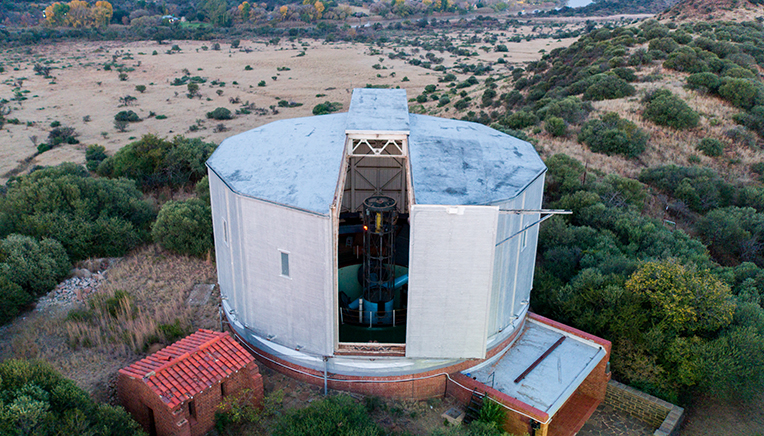Stable atmospheric environments and near perfect weather conditions were the main reasons for the establishment of the
Boyden Observatory a few kilometres outside Bloemfontein. This astronomical research observatory and science education centre is managed by the
Department of Physics at the University of the Free State (UFS).
With the newly acquired astronomical spectrograph for the Boyden Observatory 1,5-m telescope, scientists will be able to gain visual access to both the Northern and Southern Hemisphere skies.
Collaboration with expert in stellar spectroscopy The spectrograph, mainly developed and built by
Dr Richard Gray, will be used collaboratively for astronomical research by the UFS and the
Appalachian State University (ASU) in North Carolina, where Dr Gray is based.
Dr Gray is a world-renowned expert in stellar spectroscopy and leading author of one of the most influential textbooks on stellar spectroscopy,
Stellar Spectral Classification, with co-author Christopher J Corbally.
Dr Gray recently received a Fulbright Scholarship from the Fulbright Foundation to spend a full year in the UFS Department of Physics, where he will lecture several Astronomy classes and do research in collaboration with personnel of the UFS Astrophysics Research Group. He will also lead the assembly of the instrument over the next few weeks, working with personnel and students in the Department of Physics as well as the UFS Instrumentation Division.
According to
Prof Pieter Meintjes, Senior Professor from the UFS Department of Physics, some components of the instrument have been developed and constructed by the university’s Instrumentation Division, with key components purchased from funding by the
Directorate: Research Development at the UFS.
Unique capability in infrastructure “The availability of a sophisticated instrument of this nature on the 1,5-m telescope will place the UFS Astrophysics Group in an elite bracket in terms of the available infrastructure for astronomical research,” said Prof Meintjes.
He explained: “The combined polarimetric-spectroscopic capability in one single instrument is unique. Combined with the fact that it is hosted on a research instrument that is utilised and maintained exclusively by the UFS Astronomy Group in the Department of Physics, gives this group a competitive edge in relation to most international astronomy groups.”
The instrument is valued at close to R1,5 million.
 The Boyden Observatory. (Photo:Supplied)
The Boyden Observatory. (Photo:Supplied)
According to Prof Meintjes, the instrument will be mounted at the backend of the UFS Boyden 1,5-m telescope and will allow them to do simultaneous polarimetry and spectroscopy of astronomical sources. “This is vital for the research we are working on,” he said.
International collaboration and student developmentThe instrument also brings with it the possibility of forging international collaborations for research as well as student development. “This can advance the stature of the UFS as an internationally respected research-led tertiary institution,” said Prof Meintjes.
The possibility of making the UFS Boyden 1,5-m telescope completely remote-controlled, is being investigated. “This will serve the observational needs of researchers from both the UFS and the ASU, with researchers at ASU able to access the telescope for their own in-house research programmes. The availability of such an instrument on the UFS 1,5-m telescope also opens up the possibility to accommodate visiting researchers from ASU or elsewhere in the world at Boyden,” said Prof Meintjes.